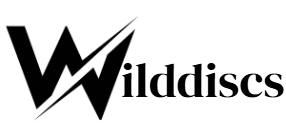In the landscape of literary production, erotica has traditionally occupied a paradoxical space—marginalized by the academy yet persistently consumed, cherished, and written. With the rise of the internet, however, this genre has been fundamentally transformed, particularly through the proliferation of amateur and reader-submitted platforms. Among the most enduring and culturally resonant of these is Kristen’s Archives, a website that has long served as a repository for erotic stories, offering a virtual library of desire. This essay explores the cultural significance of Kristen’s Archives, its role in promoting diverse sexual expression, and its influence on contemporary perceptions of erotica in the digital age.
I. Erotica as Folk Literature: Democratizing Desire
At its core, Kristen’s Archives operates not merely as an erotic story database but as a democratizing force in literary expression. Where traditional publishing channels often enforced heteronormative, male-centric narratives in erotica, Kristen’s Archives emerged as a site where anyone could contribute their fantasies—free from editorial censorship or commercial constraints. As such, it can be read as a form of folk literature, produced by and for communities outside the mainstream.
This open-submission model enabled a diversity of voices, themes, and sexual identities to flourish. Unlike professionally curated erotic collections that often cater to market demands, Kristen’s Archives offered a porous platform—allowing for everything from the taboo to the tender, the conventional to the transgressive. It was here that users encountered fantasies involving BDSM, same-sex relationships, polyamory, gender fluidity, and other sexual expressions that might be excluded or sanitized in commercial erotica.
In this way, the site functioned as a digital agora of sexual storytelling, blurring the lines between author and reader, professional and amateur, normative and marginal. The resulting archive is thus both literary and anthropological—a reflection of the sexual subconscious of an era.
II. An Archive of the Intimate: Digital Preservation and the Everyday Erotic
What distinguishes Kristen’s Archives is not merely its content but its form: a sprawling, early-internet HTML site that resists the sleek commercialization of today’s digital reading platforms. Its aesthetic recalls a bygone era of the web—one of Geocities and message boards—imbuing it with an authenticity that is both nostalgic and defiant. This outdated design belies the site’s revolutionary function: preserving ephemeral sexual narratives that might otherwise be lost to time.
In this sense, the archive becomes an act of resistance. It asserts that sexual expression—particularly amateur, non-commercial, and non-mainstream sexual expression—is worthy of preservation. It also testifies to the everydayness of desire: these are not necessarily polished or professionally edited pieces, but raw, unfiltered articulations of longing. By hosting thousands of such narratives, Kristen’s Archives becomes a time capsule of erotic imagination, offering a textured, multifaceted view of human sexuality in the late 20th and early 21st centuries.
III. Erotica and Identity: A Platform for Exploration and Affirmation
Erotic literature has always served a dual purpose: to arouse and to affirm. In the privacy of reading, individuals can safely explore fantasies that they may not feel permitted to enact in real life. For many, especially those within marginalized sexual communities, platforms like Kristen’s Archives provided a crucial space for self-exploration and identity formation.
This is particularly relevant for readers who lacked access to inclusive sex education or queer-affirming literature. In lieu of formal representation, these archives became informal pedagogical spaces, where one could learn not only about sex acts, but about consent, negotiation, and the emotional textures of desire. The presence of reader-submitted content further reinforced a sense of community—an unspoken acknowledgment that others, too, shared one’s longings.
Moreover, in enabling writers to tell their own stories, Kristen’s Archives disrupted the traditional power dynamics of erotica, which often cast the reader as passive consumer. Here, readers became authors, curators of their own sexual narratives. This reciprocal structure fostered a kind of collective authorship, where the archive itself is not the product of a single literary vision but a mosaic of desires, identities, and voices.
IV. Erotica in the Digital Age: From Stigma to Scholarship
Historically dismissed as pornographic or morally suspect, erotic literature has struggled for legitimacy in academic and literary circles. Yet in recent years, with the rise of fan fiction, slash fiction, and digital erotica studies, this perception has begun to shift. Sites like Kristen’s Archives are increasingly recognized not just as repositories of titillation, but as rich texts worthy of critical inquiry.
The archive offers a window into the shifting norms of sexuality, gender roles, and power dynamics across decades. It charts evolving attitudes toward taboo, the impact of cultural movements (e.g., feminism, LGBTQ+ rights, kink communities), and the growing lexicon of consent and sexual ethics. In doing so, it contributes to a broader understanding of how erotica functions as a mirror of societal change.
Moreover, digital erotica platforms have played a significant role in normalizing sexual discourse in public and academic spaces. Scholars of digital humanities and queer theory are now engaging with these texts as part of a broader effort to deconstruct binaries between high and low literature, between the erotic and the intellectual. Kristen’s Archives stands as a testament to this convergence—a bridge between pleasure and theory, anonymity and intimacy.
Conclusion: A Living Archive of Longing
In evaluating the cultural significance of Kristen’s Archives, one must consider its multifaceted role: as a literary site, a communal forum, a pedagogical tool, and an anthropological archive. It resists commercialization and centralization, privileging the messy, honest, and often contradictory expressions of human desire. In doing so, it preserves a vision of erotica that is pluralistic, participatory, and deeply human.
As we move further into an era defined by algorithmic recommendation engines and curated sexual content, the rawness and openness of Kristen’s Archives offers a powerful counterpoint. It reminds us that erotica—like all literature—is at its best when it gives voice to the silenced, space to the unseen, and language to the unspeakable. In its own way, Kristen’s Archives has not only archived desire; it has helped shape the modern cultural imagination of it.


